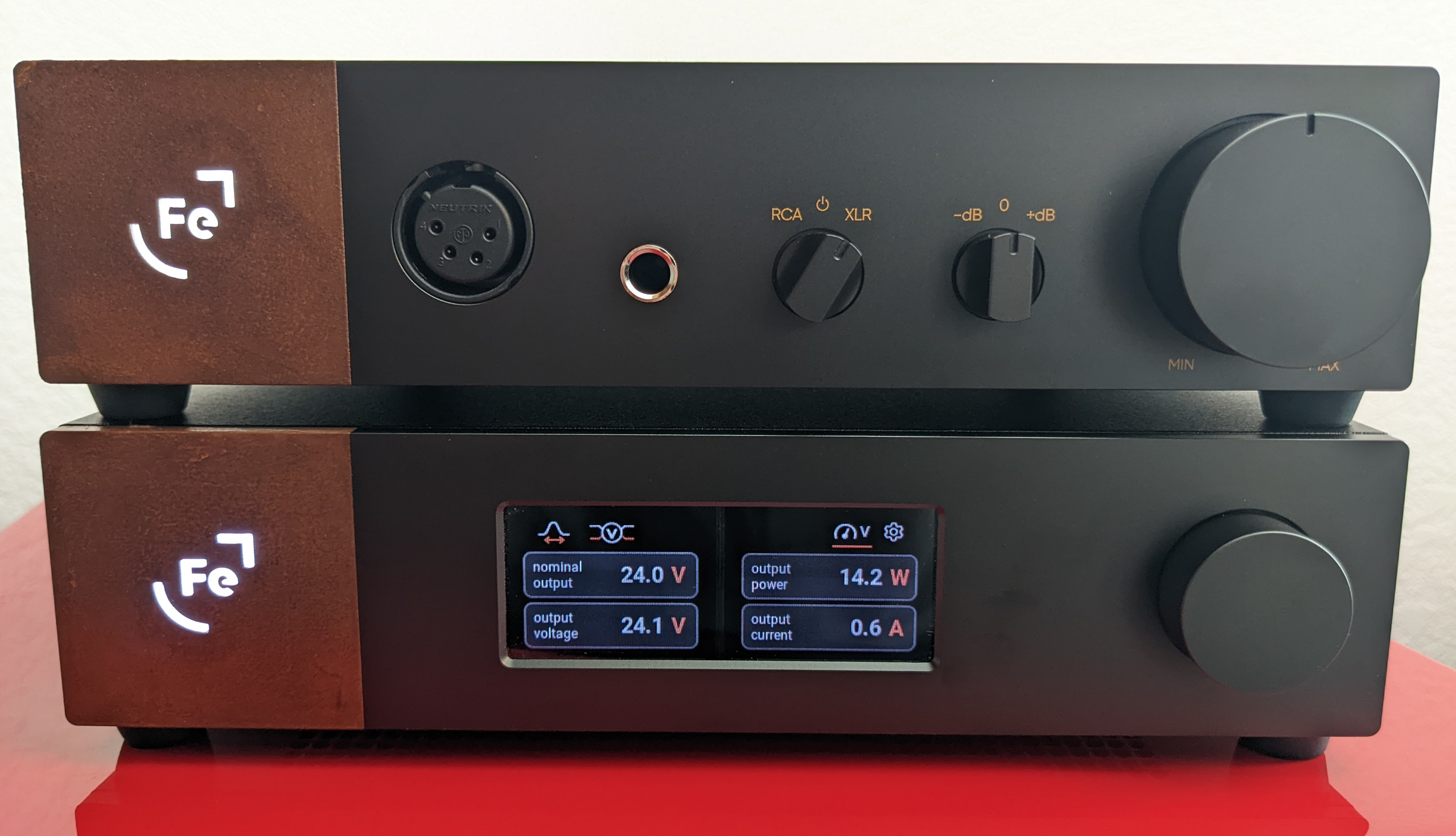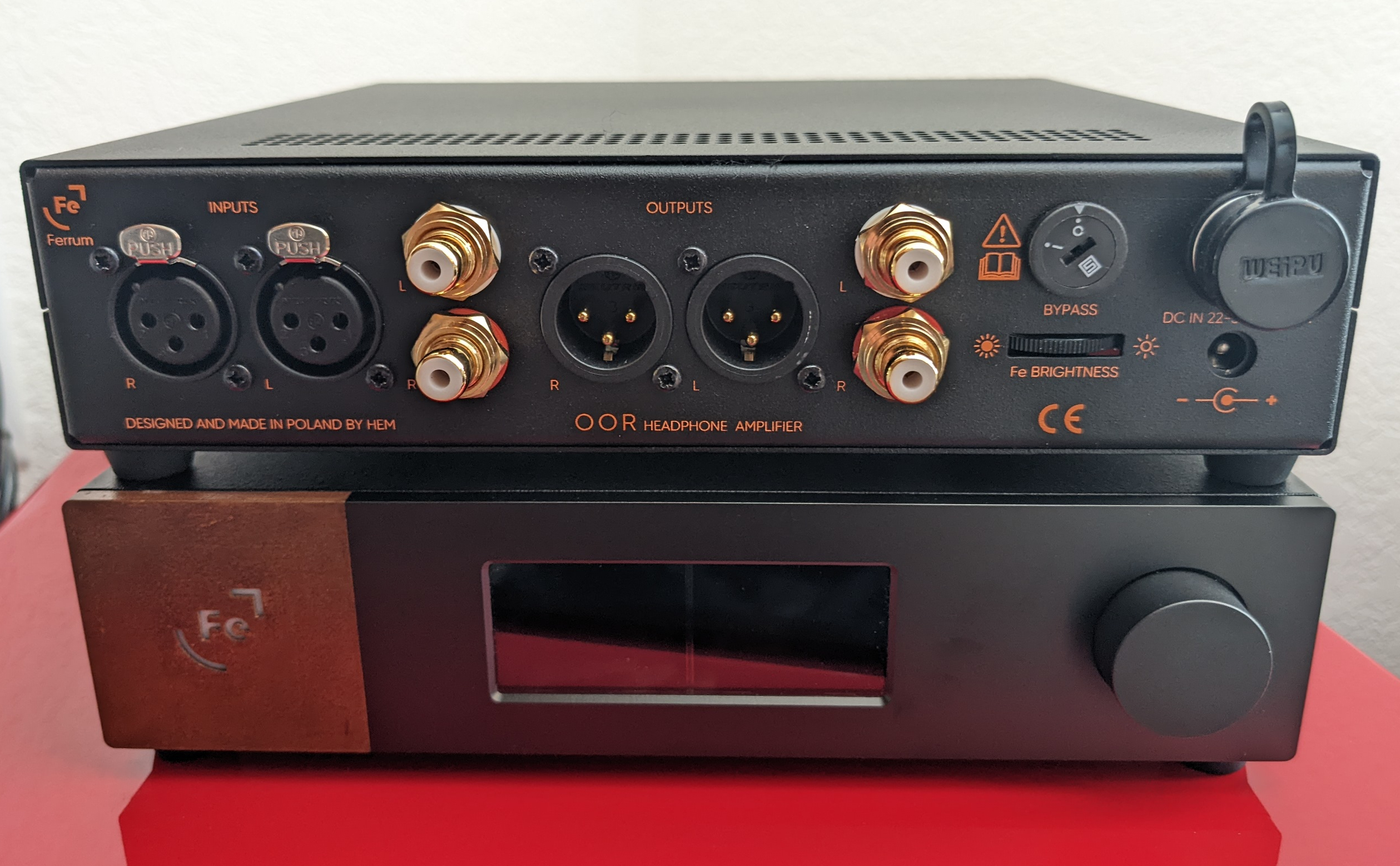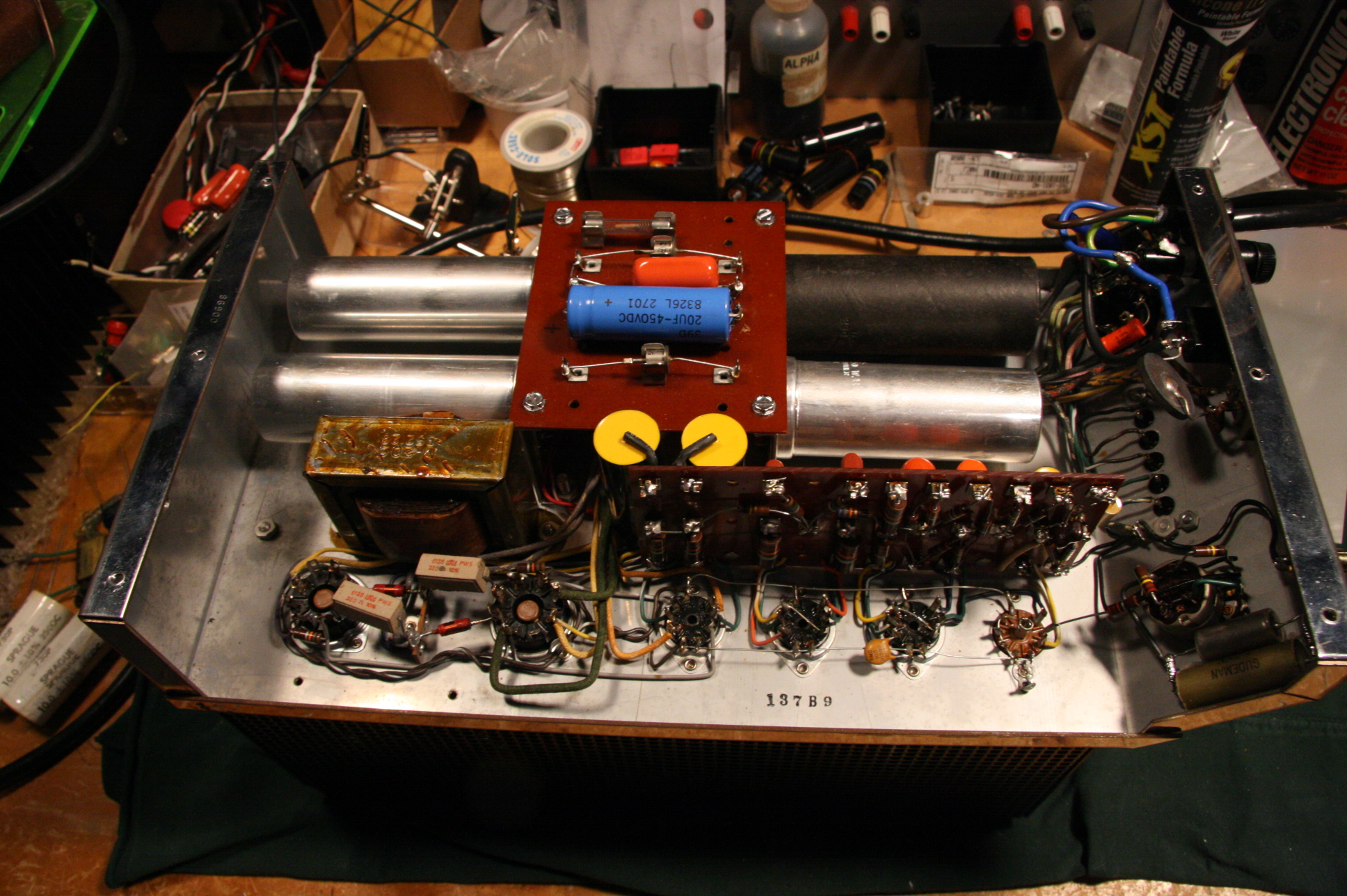by Kevin OBrien and Mike OBrien on 07/07/2011
YFS MODIFIED MCINTOSH MC75 MONO AMP VS. QUICKSILVER SILVER 60 MONO AMP
I was wondering how the Quicksilver Audio Silver 60 monoblocks compared to my prized YFS modified McIntosh Labs MC75 monoblocks from circa 1960's era. Is this a fair comparison or are these two sets of monoblocks just not even in the same league? Is there really a worthy successor to the MC75 monos with a modified power supply? I will be using my reference Von Schweikert Audio VR-5 Hovland Special Edition speakers which are nominally rated at 4 ohms. One point to note is that both the MC75 and the Silver60 have 4 AND 8 ohm taps. I will be using the 4 ohm taps.

First, let's talk a little bit about what YFS did to the MC75 power supplies. The original power supply in the MC75 in the 1960's was unique for its time in it's use of a voltage doubler. In stock form the power supply has been known to break into motor boating as the B+ filter capacitors deteriorate. On the other hand, many MC75's are still operating today with no issues. To maintain physical layout, we chose to reform the original electrolytic capacitors since the original units had relatively low leakage. The second step was to replace the entire power supply with modern design using Panasonic TSHC series electrolytics and ultra fast recovery rectifiers. As it turned out, the sound was outstanding with the original components so we went no further.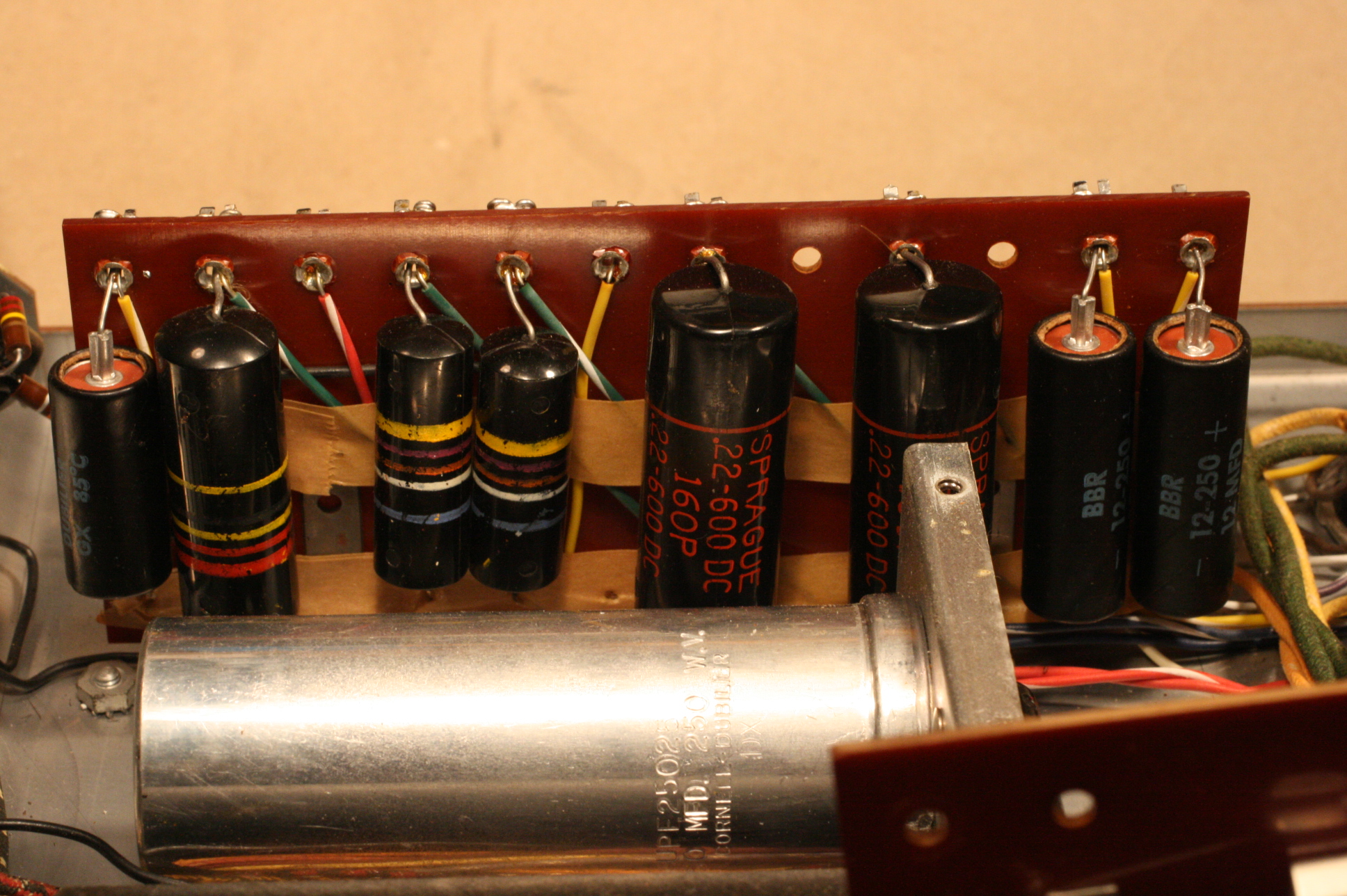
At YFS we understand that the MC75 is a pure classic but can be taken to the next level with modern components and matched vacuum tubes. Basic electronic components have come a long way in 40+ years so it makes sense that an inherently sound topology can be improved by simple component substitution. No modifications were made to component values or the basic topology. We loaded the MC75 with matched Sylvania NOS 6550 output tubes and matched section (transconductance matched to 5%) NOS GE twin triodes (12AU7, 12BH7, and12AZ7). We also added a power switch, replaced the stock power cord, increased bias supply capacitance, replaced all signal capacitors with modern polypropylenes, and substituted metal film resistors in critical places to reduce noise. We also replaced the speaker output terminal strips and the RCA input jack.
In the Quicksilver Silver60 monoblocks we are using the popular SED 6550's for a tube compliment. Although the power ratings are not equal, 60 watts for the QS and 75 watts for the Mac, I feel we are close enough to do a fairly legit comparison. Check out the Quicksilver website. This is the only way to buy Mike Sanders' creations.
I played a few of my favorite albums on the Silver60 monos after they were run in for over 200 hours. I have to say that these monos sound pretty nice. We all know by now that Mike Sanders has a real handle on amp design and his designs are respected among the audiophile community. He doesn't even have to advertise for crying out loud. So, how do these puppies sound compared to the MC75's you ask? I thought the S60's sounded great! Great slam and resolution with a nice midrange but still PLENTY of detail. This is what you would expect from a quality set of monos.
I then switched back to the MC75's. I noticed just a bit better midrange and slightly more warmth but with all the detail still intact. Although both sets of monos sounded great, the MC75's just had that Mac magic that I just cannot seem to find anywhere else in a monoblock. Keep in mind we're talking about monoblocks under the $6,000/ pair range here. I am sure you can do better by spending more money but how much better, I'm not entirely sure.
So, if you're in the market for a pair of monoblocks do not hesitate to give the Silver60's a try. They have that Quicksilver signature sound that is nice and holographic while keeping that sweet tubey midrange sound intact that we tube-lovers enjoy. Can I reiterate that these babies really reveal a TON of detail when using the 6550 output tube. If you prefer a bit warmer sound, go with the EL34 output tube. You can also try a KT88 for a little more power output and that signature KT88 sound. The best part is that the S60's will not break the bank but still provide great audiophile performance. I know these are discontinued at this point but if you can find a pair used, JUST BUY THEM! Yup, I said it. DO IT!
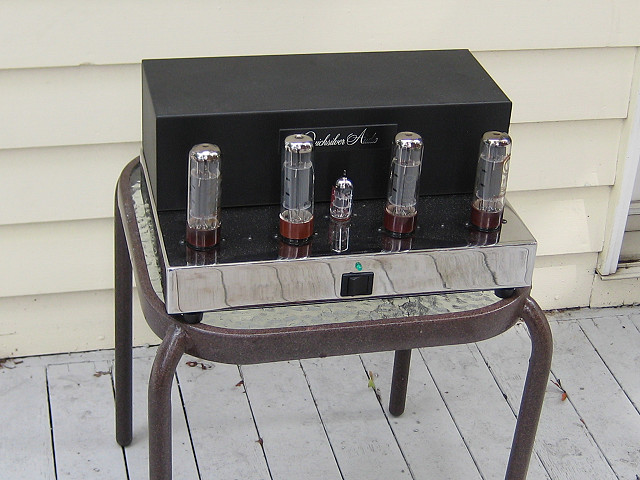
Associated Equipment for this Review:
- Von Schweikert VR-5 HSE (Hovland Special Edition) Speakers
- Quicksilver tubed Linsestage
- EE Minimax DAC Bolder Cables Level 1 Modified
- IBM Laptop with Foobar 2000 Digital Audio Source
- Theta Digital Carmen II CD Transport
- EE Minimax Phono Stage
- VPI Scoutmaster Turntable with VPI Zephyr Cartridge
- Equitech/ PS Audio Balanced Power Conditioners
- YFS Custom Cables & Interconnects
- YFS Custom Room Treatment
- Herbies Audio Lab Dampening Devices and Tube Dampers
- KOB. MOB


